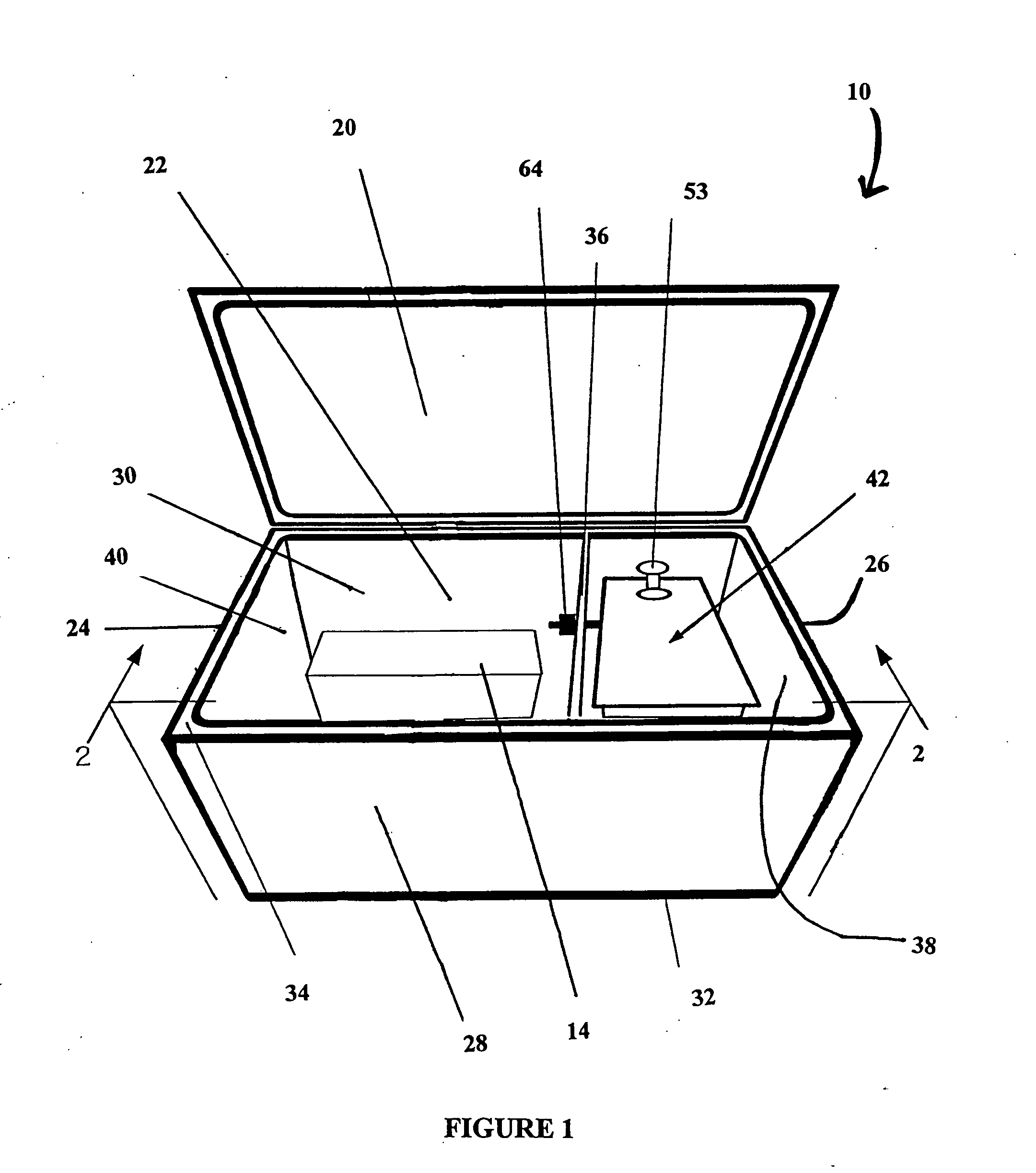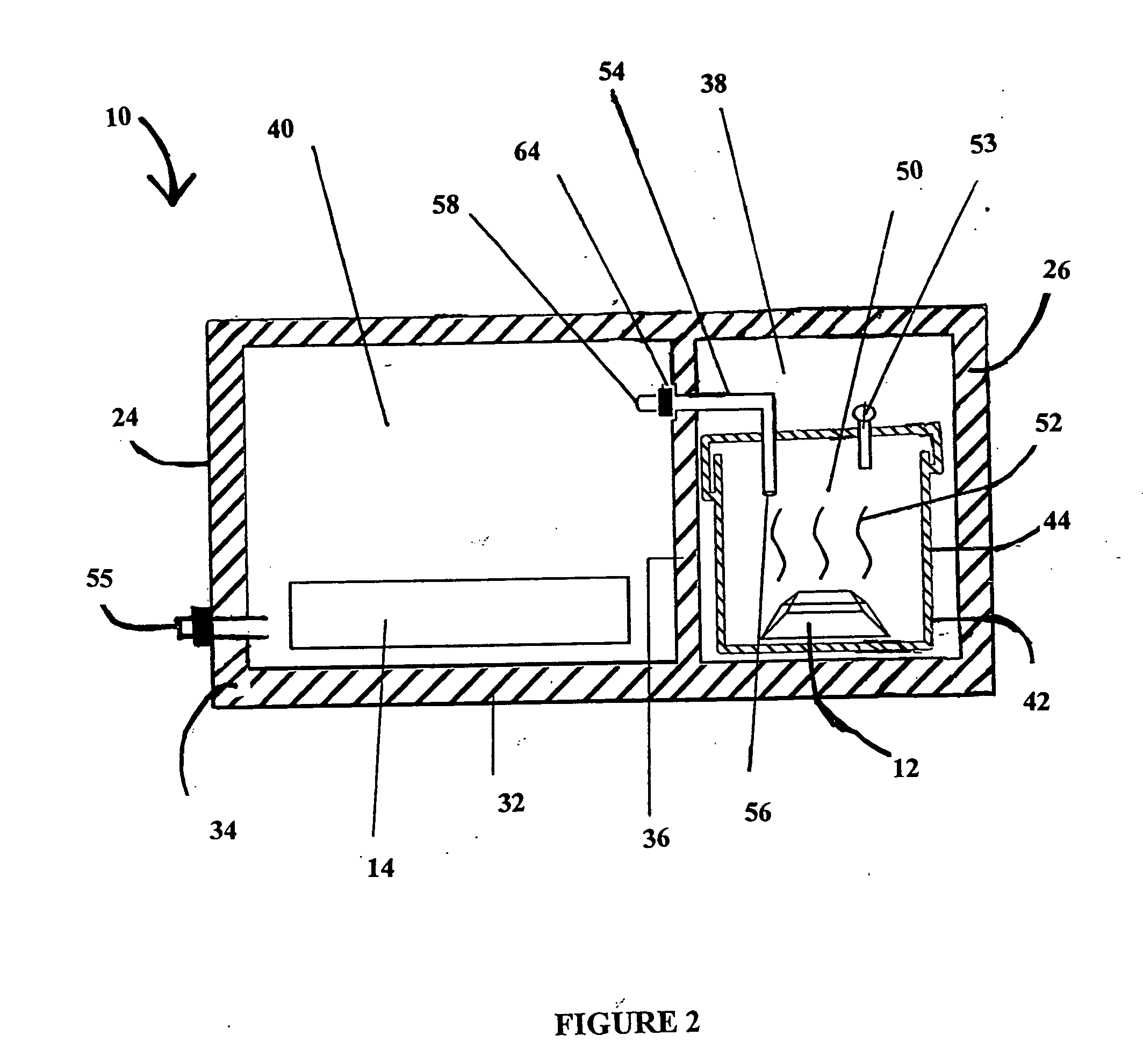Low temperature cooler
- Summary
- Abstract
- Description
- Claims
- Application Information
AI Technical Summary
Benefits of technology
Problems solved by technology
Method used
Image
Examples
first embodiment
[0034] Referring again to FIG. 3, the temperature-regulating valve 64 can be seen. In this embodiment, the temperature-regulating valve 64, referred to as a “Donut” valve, comprises an insulation layer 68 around the coolant tube 54 to prevent conduction from prematurely freezing the temperature-regulating valve 64. The temperature-regulating valve 64 surrounds the coolant tube 54 and may be encased in a flexible membrane, such as plastic (not shown). In this embodiment, the temperature-regulating valve 64 contains a fluid and acts as a membrane through which the vapor 52 passes. As discussed previously, the fluid can be water. As the fluid in the “donut” temperature-regulating valve 64 freezes, it compresses the coolant tube 54 and discontinues the flow of the coolant 12 from the coolant chamber 38 to the storage compartment 40 via the opening in the internal wall 36.
second embodiment
[0035] Referring now to FIG. 4, the temperature-regulating valve 64 is shown. In this embodiment, the temperature-regulating valve 64, in the form of a “Pincer” valve, comprises a base cylinder 72. The base cylinder 72 includes a first closed end 74, sides 76 and a second open end 78. Attached to the first closed end 74 is the first pincer 80, which includes a base arm 82, an extension arm 84 and a cross arm 86.
[0036] The temperature-regulating valve 64 also includes a nested sliding cylinder 88. The sliding cylinder 88 includes a first closed end 90, sides 92 and a second open end (not shown). The sliding cylinder 88 is designed to be slidably nested with the open end 78 of the base cylinder 72. Attached to the first closed end 90 of the nested sliding cylinder 88 is a second pincer 94, which also includes a base arm 96, an extension arm 98 and cross arms 100. Within the base cylinder 72 and sliding cylinder 88 is a membrane-filled expansion fluid sac 104, filled with fluid. The cr...
PUM
 Login to View More
Login to View More Abstract
Description
Claims
Application Information
 Login to View More
Login to View More - R&D
- Intellectual Property
- Life Sciences
- Materials
- Tech Scout
- Unparalleled Data Quality
- Higher Quality Content
- 60% Fewer Hallucinations
Browse by: Latest US Patents, China's latest patents, Technical Efficacy Thesaurus, Application Domain, Technology Topic, Popular Technical Reports.
© 2025 PatSnap. All rights reserved.Legal|Privacy policy|Modern Slavery Act Transparency Statement|Sitemap|About US| Contact US: help@patsnap.com



